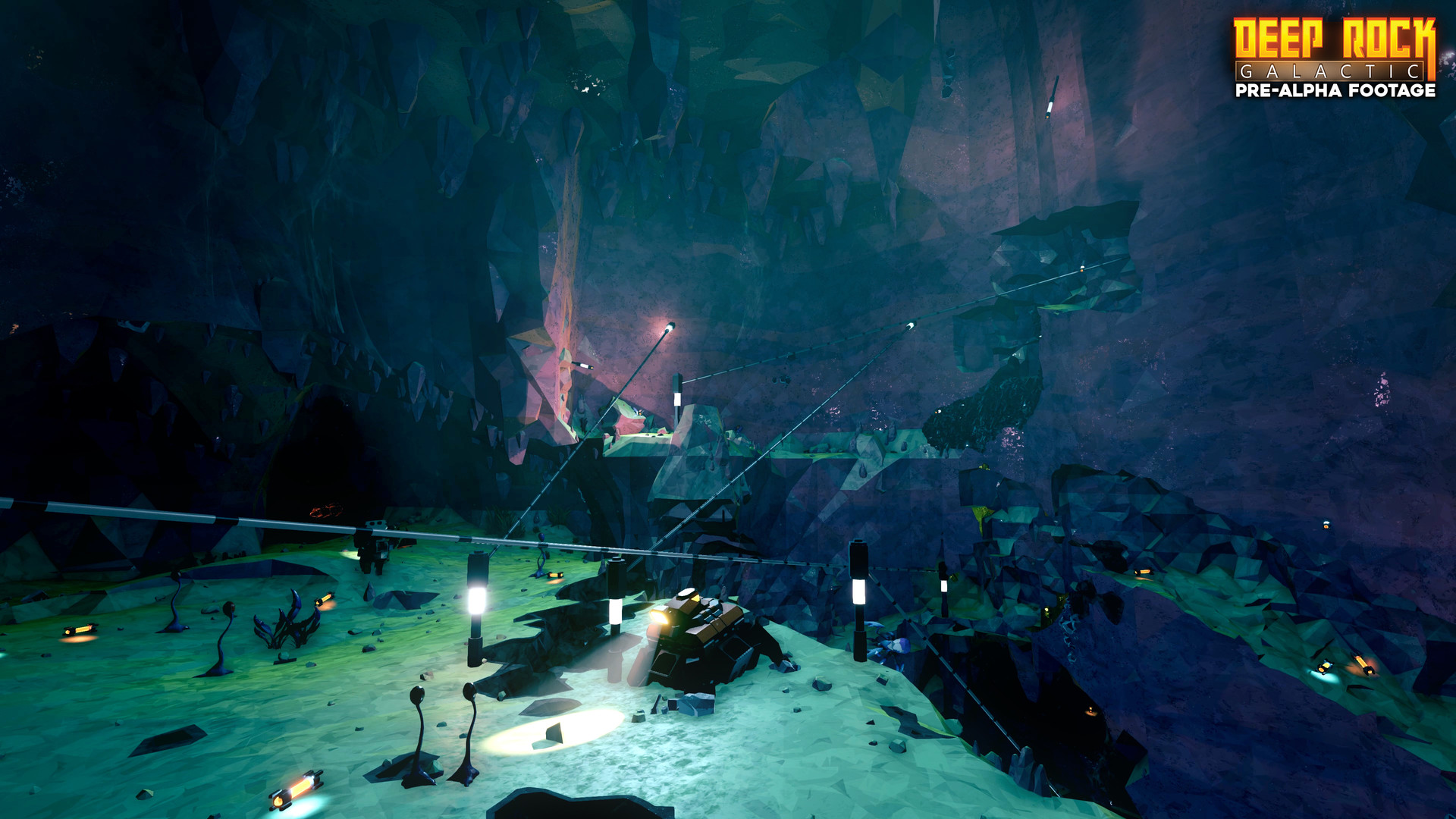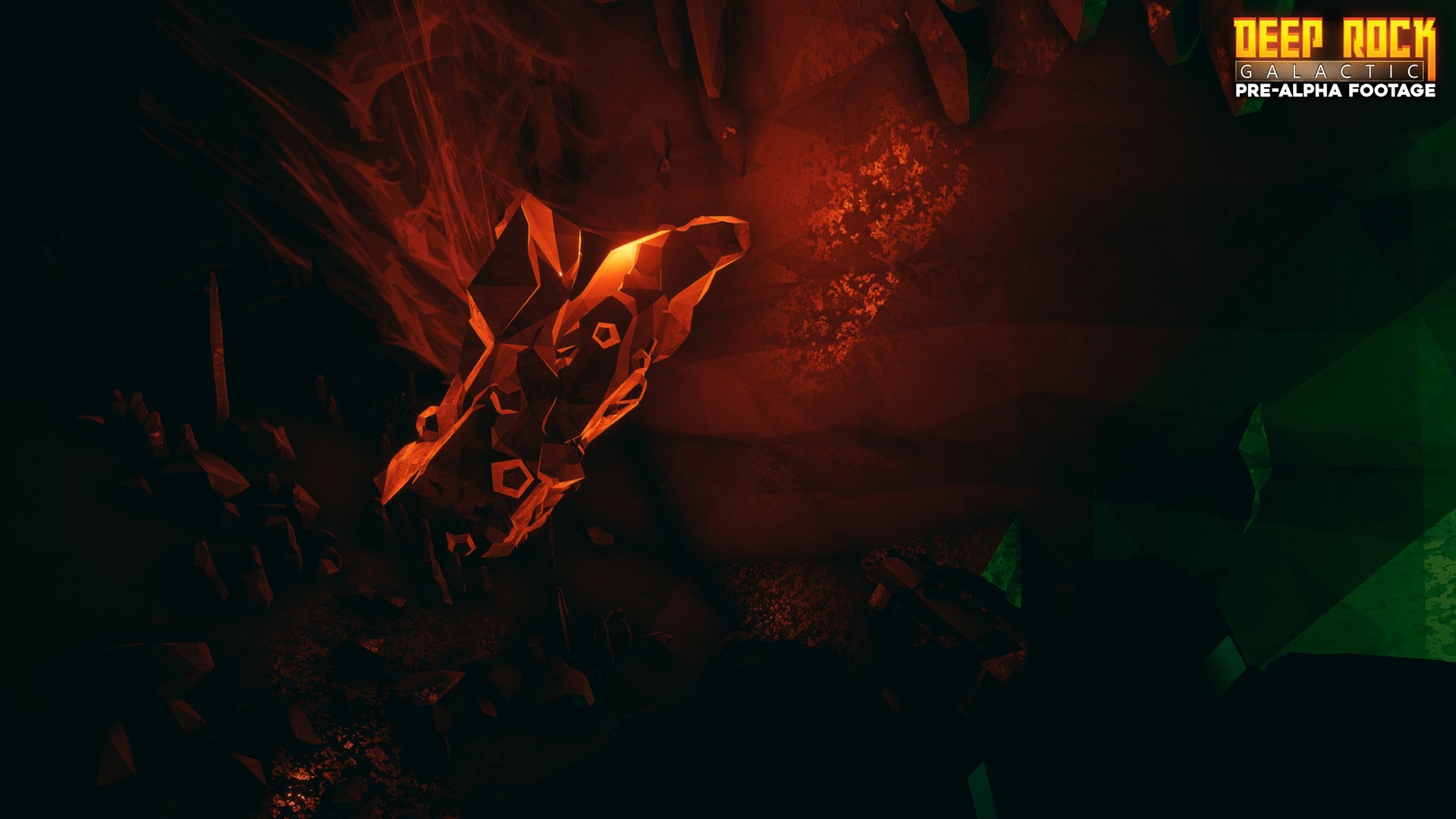
Ghost Ship Games’ Deep Rock Galactic was one of the more interesting titles to emerge during Microsoft’s E3 2017 presentation. On the surface, it appears to be a four player co-op shooter with hordes of enemies to fight. However, there’s lot of exploration, mining and plundering across procedurally generated caverns. You don’t even have to wait to know how it plays – it’s currently in closed Alpha.
GamingBolt decided to speak to Ghost Ship Games founder and CEO Søren Lundgaard about the game’s development, how the procedural generation functions and when we can expect the game to arrive on Xbox One.
"We want the game to feel creepy, alien and dangerous, and the enemies are a main ingredient to that."
What is the story behind the development of Deep Rock Galactic? What motivated you to go with Steam Early Access for the beginning?
We started the company right after the Danish game studio Press Play was closed back in March 2016. Shortly after, we had good traction on the game and began considering ways of getting funded. The open design of the game felt quite suited for Early Access and we could see other co-op games doing fine on Steam. On top of this, we also wanted to be a transparent and open game studio and this fits well with Early Access.
How do you balance the four classes to make them equally effective?
It’s a co-op game, so we have not spent a ton of time on the class balance aspect. Of course, we want each class to feel cool and important, but a real equal balance is more important in a PvP environment. We play-test the game a lot internally. In the beginning, that was enough to get an idea about the balance (like, which class what always chosen last – maybe it’s not the most fun right now?). Later, we have observed how our Closed Alpha players play the game and just kept an eye on things.
What can you tell us about the various creatures that players will encounter?
They will be dreadful! I mean, we want the game to feel creepy, alien and dangerous, and the enemies are a main ingredient to that. For now, we have focused on a spider-like archetype plus a few experiments, but during the Early Access time we will add more monsters. All of them, as nasty as we can make them.
What are some of the challenges you faced while developing the procedural generation system?
First, we had to develop the terrain tech and make sure that we could pull it off. That was a critical task for us. Then we considered ways of using it and discussed how to create the caves. Since we hadn’t done big procedural games before, we decided to take a pragmatic approach and not over-design things. What we ended up with is something we call “procedural level design” and it’s a nice mix between hand-crafted components and code.
"Our goal is to build a solid foundation for the game. We are building systems right now, rather than adding a ton of content."
One criticism of procedurally generated games is that some environments can become repetitive. How does Deep Rock Galactic get around this?
Our solution takes root in the “procedural level design”. Since we do have some hand-crafted control (again, this is more a hybrid than pure procedural content), we can also make sure that we get in variation and even control that variation. So, we can define a cave to be part of the first things you encounter or the last things. And the same with the content inside the caves. This way, we can loosely define the experience we want in each mission. In the end, we will need to add a lot of different things that you can encounter and the variation will come from that.
With the ability to carve one’s own path, how do you design missions? Is there a balance that must be maintained between player freedom and mission structure?
We experimented with this quite a bit in the beginning and realized that underground caves are difficult to navigate. The result was that the missions, the cave systems, ended up rather simple and that players have plenty of fun just navigating and traversing the caves. Again, we are not generating a whole world here, so there are only the caves that we have carved out and nothing else. Later, we might introduce more complex missions, where part of the challenge is to look for new caves by scanning and drilling.
How many missions can players currently experience in Early Access and what is the final number you’re aiming for at launch?
The current version of the game is what we call a Closed Alpha and it’s only available to a couple of thousand players. It has 7-8 different cave set-ups, but the primary mission objective is always the same: collect X Morkite. When we launch the game in Early Access (expected in early 2018), we plan to have more primary objectives and even some secondary objectives to create more diverse missions. And the cave set-ups will be more flexible as well with combinations of the physical layout, biomes and length.
The latest update had added some new content while overhauling sound effects, animations and much more. What else can we expect in terms of improvements, refinements and polishing?
Our goal is to build a solid foundation for the game. We are building systems right now, rather than adding a ton of content. Also, with the launch on Early Access and Game Preview on Xbox, there are several under-the-hood features that needs to be in place to get make it solid launch on day one. That said, we are also working on customization & crafting features as well as a nice solution to playing solo. Deep Rock Galactic is a co-op game, but we do want it to be “solo player friendly”, so you at least can get some good practice there.
"Sony and Nintendo lack a similar program, so when Microsoft approach us and our publisher, Coffee Stain, it was rather easy to reach an agreement."
What motivated the decision to launch exclusively on Xbox One? Will the game head to other platforms in the future?
The main reason is Microsoft’s Game Preview program. It fits our game concept and business model very well. Sony and Nintendo lack a similar program, so when Microsoft approach us and our publisher, Coffee Stain, it was rather easy to reach an agreement. If the game performs well on Xbox then it’s a likely scenario that we will make it available on the other platforms after the exclusivity ends.
How on track is development and will there be any other significant content updates after release?
We do not have a release window for the full game yet. We aim for an Early Access/Game Preview launch in early 2018. How long it will then take until full release is a bit unknown, though we will do our best to make it a reasonable time frame. The game is very much on track for the EA/GP release; the current Close Alpha is quite stable and polished (for an alpha), and we are right now focusing on locking it down and upping performance on both PC and Xbox. After launch, we will continue to update the game, and after full release, we expect to keep adding content as long as there is an audience.
Is there is a reason why you are not launching on the PS4 given its larger install base?
The lack of a program like Game Preview made it quite difficult for us to find a viable way to do this before full release.
The game will be receiving Xbox One X support. Is native 4K and 60 frames per second on the cards?
Yes, we will support 4K and HDR. The game is a first-person-shooter, so we all know 60fps is desirable, but not something we can promise in 4K. We’ll see.
What is the resolution and frame rate of the base Xbox One version?
It has not been settled yet, but we’re doing whatever we can to maximize resolution and fps. There is an important caveat here: the game will at launch be peer-to-peer based and the host machine will therefore have more to do than the clients. As all Xbox Ones are equal, this means the clients will in general have better performance than the host.
"There is an important caveat here: the game will at launch be peer-to-peer based and the host machine will therefore have more to do than the clients. As all Xbox Ones are equal, this means the clients will in general have better performance than the host."
What are your thoughts on the Xbox One X’s 6TFLOPs GPU?
Since we started out on PC, it has not really been a factor for us other than it was less problematic to get things running in a nice fps.
I just wanted to take you back to the earlier Xbox One days. The console’s eSRAM was painful to work with. Many developers had issues with it. Is it still that much of a problem in your game?
It might be, but we are using Unreal Engine 4 and it’s taking care of those low-level issues. So, no we have not had a problem with this in our development of Deep Rock Galactic.


















